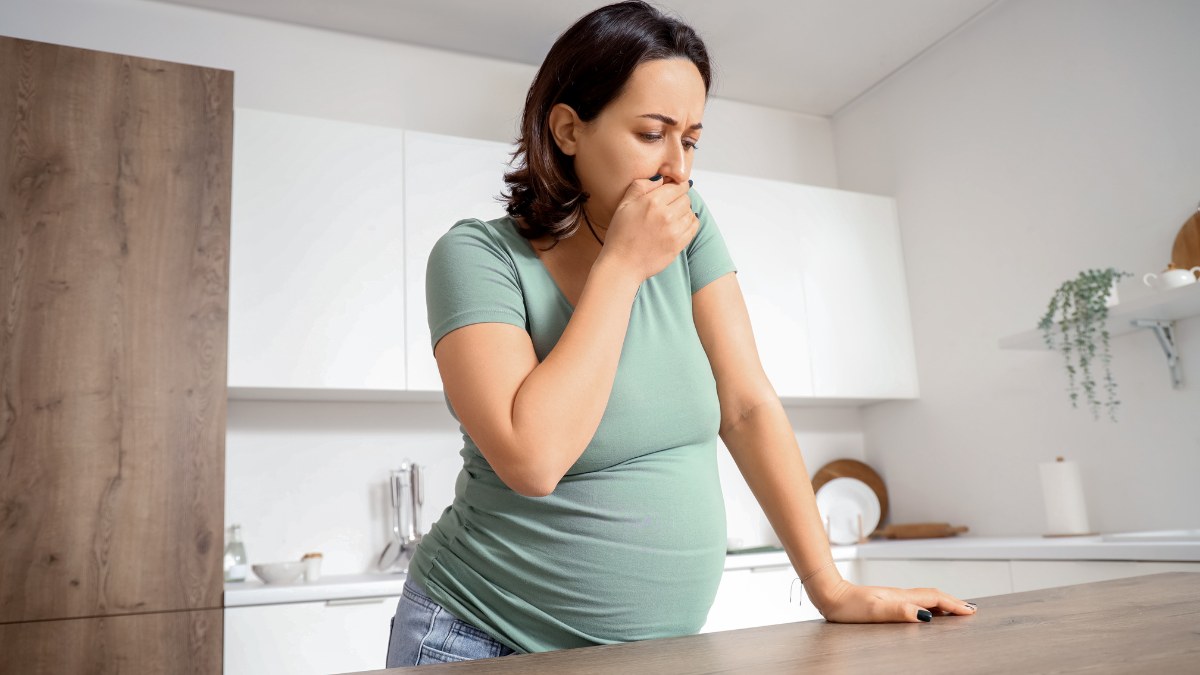Can C Section Cause Autism?
A few studies have suggested a link between the two, but more research is needed before a definitive conclusion can be reached.
.jpg)
Can C Section Cause Autism?
Can C Section Cause Autism?
C-sections are becoming increasingly common, with approximately 1 in 3 births in the United States now being delivered via Cesarean section. With this increase in C-sections, there has been a growing concern about potential risks associated with the procedure. One question that has arisen is whether C-sections can cause autism.

What is C Section?
A C-section, or cesarean section, is a surgical procedure in which a baby is delivered through incisions made in the mother's abdomen and uterus. The procedure is typically performed when vaginal birth would pose a risk to the health of the mother or baby.
This includes situations such as fetal distress, multiple births, placenta previa, and certain medical conditions of the mother. In some cases, C-sections are planned in advance, while in others they may be performed as emergency procedures.
Recovery from a C-section can take longer than recovery from a vaginal birth and may involve more pain and discomfort.
The Link Between C-Sections and Autism
There is no conclusive evidence that C-sections directly cause autism. However, the topic has been a matter of debate among researchers and medical professionals for some time now. A few studies have suggested a link between the two, but more research is needed before a definitive conclusion can be reached.
For example, a study published in JAMA Pediatrics in 2013 found that children delivered via C-section had a 21% higher risk of developing autism than children delivered vaginally. But it's important to note that the study only found an association between the two, and did not establish a causal relationship.
Similarly, another study published in the Journal of Autism and Developmental Disorders in 2015 found that C-sections were associated with a 23% increased risk of autism. However, the study also noted that other factors, such as the mother's age and education level, could also be contributing factors.
It's important to keep in mind that C-sections are a common and often necessary medical procedure. While the potential link between C-sections and autism is worth investigating further, it's crucial not to draw any premature conclusions or stigmatize mothers who have had C-sections.
As always, the most important thing is to prioritize the health and well-being of both mother and baby.
What do Studies say?
While there is no conclusive evidence that C-sections directly cause autism, several studies have suggested a link between the two. A study published in JAMA Pediatrics in 2013 found that children delivered via C-section had a 21% higher risk of developing autism than children delivered vaginally.
Similarly, another study published in the Journal of Autism and Developmental Disorders in 2015 found that C-sections were associated with a 23% increased risk of autism.
However, it's important to note that these studies only found an association between C-sections and autism and did not establish a causal relationship. Other factors such as maternal age, education level, socio-economic status, and underlying medical conditions could also be contributing factors.
It's worth noting that some studies have contradicted the findings of the aforementioned studies. For instance, a study published in the Journal of Child Psychology and Psychiatry in 2020 found no significant increase in the risk of autism among children born by C-section compared to those born vaginally.
Overall, more research is needed to understand the potential link between C-sections and autism fully. It's essential to approach this topic with caution and avoid stigmatizing mothers who have had C-sections.
As always, healthcare providers should prioritize the health and safety of both mother and baby when determining the most appropriate mode of delivery.
Possible Explanations for the Link
There are a few theories as to why C-sections might be associated with an increased risk of autism. One theory is that C-sections disrupt the natural bacteria transfer from mother to baby during birth, which may affect the development of the baby's immune system and increase the risk of autism.
Another theory is that C-sections may cause a lack of the stress hormone cortisol in the baby, which is important for brain development and may also increase the risk of autism.
Limitations of the Studies
It's important to note that the studies linking C-sections and autism have limitations. For example, they cannot prove causation - they can only suggest an association between the two.
There may be other factors that could be contributing to the increased risk of autism in children delivered via C-section, such as pre-existing conditions in the mother or complications during pregnancy.
Additionally, the studies do not take into account the fact that some C-sections are elective, which means that the babies may have been at higher risk for autism to begin with.
The Reasons Behind the Increase in C-Sections
There are several reasons why C-sections are becoming more common. One major factor is the increasing age of mothers. Women who have children later in life are more likely to require a C-section due to complications such as placenta previa, gestational diabetes, or hypertension.
Additionally, there has been an increase in the number of multiple births, which often require a C-section.
Another reason for the rise in C-sections is the improvement in medical technology and surgical techniques. Today's healthcare providers can better identify when a C-section is necessary and perform the procedure more safely than before.
Finally, some women may choose to have a planned C-section for personal reasons, such as a fear of childbirth or previous traumatic birth experiences. While elective C-sections should always be carefully considered and discussed with healthcare providers, they are becoming more common in some parts of the world.
The Benefits of C-Section Versus Vaginal Birth
While there are risks associated with any medical procedure, including C-sections, there are also some potential benefits to consider. For example, a planned C-section can be scheduled in advance, which may be more convenient for some mothers and families.
Additionally, a C-section can reduce the risk of certain birth injuries to the baby, such as shoulder dystocia or brachial plexus injury.
For mothers who have had previous difficult or traumatic vaginal births, a planned C-section can offer a sense of control and predictability that may help alleviate anxiety. Some women may also prefer a C-section if they have certain medical conditions that make vaginal birth more risky.
Every woman's situation is unique, and the decision to have a C-section versus vaginal birth should always be made in consultation with healthcare providers.
While there are potential benefits to consider, it's crucial to weigh these against the risks and make an informed decision based on what is best for both mother and baby.
Possible Risks Associated with C-Sections Other than Autism
While the potential link between C-sections and autism is a topic of concern, it's important to note that there are other potential risks associated with the procedure as well. These risks may include:
- Infection: As with any surgical procedure, there is a risk of infection following a C-section. This can occur at the site of the incision or in other parts of the body.
- Blood loss: C-sections typically involve more blood loss than vaginal births, which can increase the risk of complications such as anemia or blood clots.
- Injury to surrounding organs: During a C-section, nearby organs such as the bladder or bowel may be accidentally injured during the surgery.
- Longer recovery time: Recovery from a C-section typically takes longer than recovery from a vaginal birth and may involve more pain and discomfort.
- Future fertility issues: There is some evidence to suggest that women who have had multiple C-sections may be at increased risk for future fertility issues, such as placenta previa or uterine rupture.
It's important to discuss these potential risks with healthcare providers when considering whether a C-section is necessary. While sometimes unavoidable, it's crucial to weigh the benefits against these potential risks and make an informed decision based on what is best for both mother and baby.
The Importance of Early Detection and Intervention for Children with Autism
While the link between C-sections and autism is still being investigated, it's important to note that early detection and intervention can greatly improve outcomes for children with autism.
Autism is a neurodevelopmental disorder that affects communication, social interaction, and behavior. Early signs of autism can include delayed language development, lack of eye contact, and repetitive behaviors.
Research has shown that early intervention can help improve communication skills, social interaction, and behavior in children with autism.
This may include therapies such as applied behavior analysis (ABA), speech therapy, occupational therapy, or physical therapy. In some cases, medication may also be prescribed to help manage symptoms.
It's important for parents and healthcare providers to be aware of the early signs of autism so that children can receive appropriate interventions as soon as possible. While there is no cure for autism, early detection and intervention can greatly improve outcomes and help children reach their full potential.
If you have concerns about your child's development or suspect they may have autism, it's important to talk to your healthcare provider as soon as possible.
Your provider can refer you to specialists who can conduct assessments and provide appropriate interventions if necessary. Remember - early detection and intervention are key to helping children with autism thrive!
FAQs
Is there a definitive answer to whether C-sections can cause autism?
No, there is no conclusive evidence that C-sections directly cause autism. While some studies have suggested an association between the two, more research is needed before a definitive conclusion can be reached.
What factors could be contributing to the increased risk of autism in children delivered via C-section?
Other factors such as maternal age, education level, socio-economic status, and underlying medical conditions could also be contributing factors.
Should I avoid having a C-section if I'm concerned about the potential risk of autism?
It's important not to draw any premature conclusions or stigmatize mothers who have had C-sections. As always, healthcare providers should prioritize the health and safety of both mother and baby when determining the most appropriate mode of delivery.
Can early detection and intervention improve outcomes for children with autism?
Yes, research has shown that early detection and intervention can greatly improve outcomes for children with autism. It's important to talk to your healthcare provider as soon as possible if you have concerns about your child's development or suspect they may have autism.
Conclusion
While there is some evidence to suggest a link between C-sections and autism, it's important to remember that correlation does not equal causation. C-sections are a necessary and sometimes life-saving procedure, and the vast majority of children born via C-section do not develop autism.
If you have concerns about the potential risks associated with C-sections, it's important to speak with your doctor to determine the best course of action for you and your baby.
Sources
- https://www.news-medical.net/news/20190829/Claims-that-cesarean-sections-increase-the-risk-of-autism
- https://www.spectrumnews.org/news/cesarean-sections-tenuously-tied-to-autism/
- https://www.ncbi.nlm.nih.gov/pmc/articles/PMC8015537/
- https://www.nytimes.com/2019/09/23/well/family/autism-c-section.html
- https://bmcpediatr.biomedcentral.com/articles/10.1186/s12887-021-02518-1




%20(1).jpg)

%20(1).jpg)





%20(1).jpg)
.jpg)
.jpg)